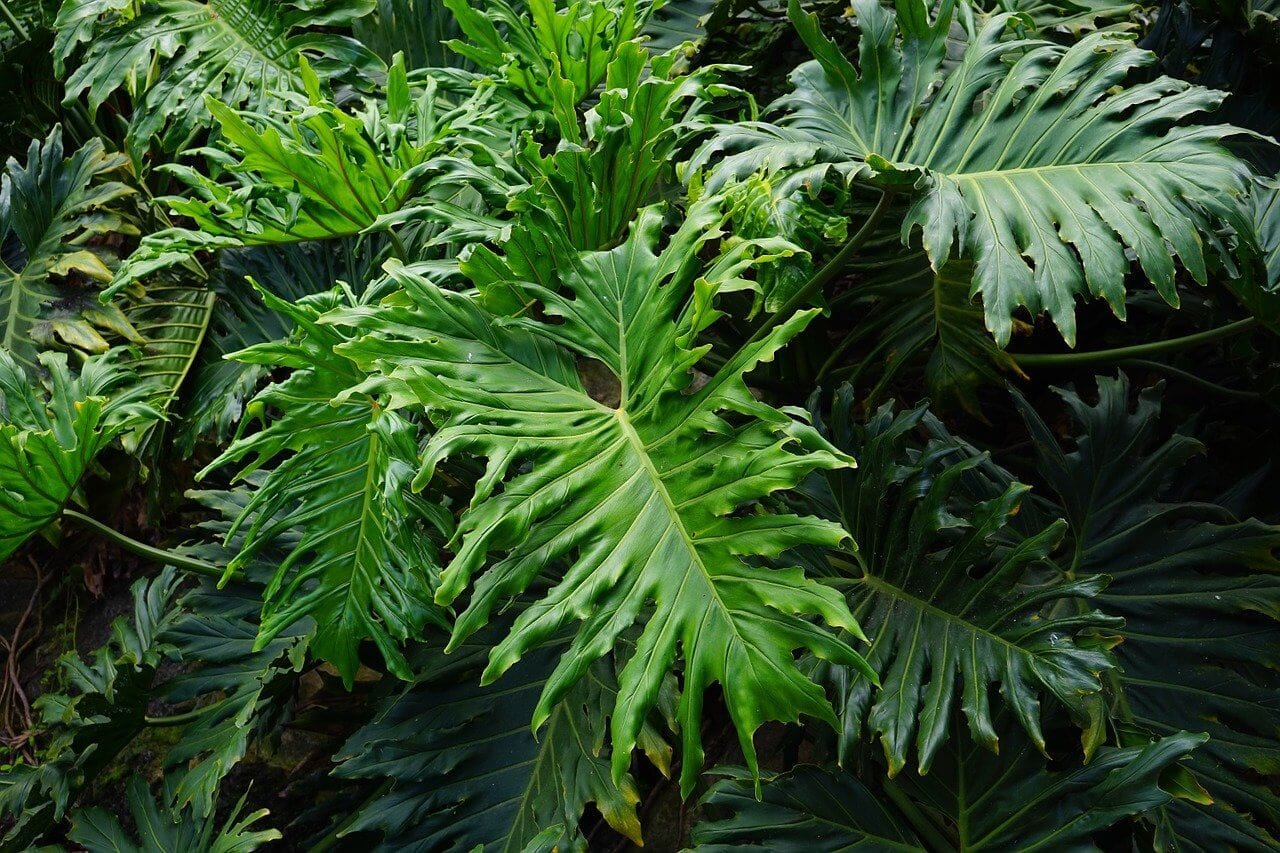
The Split-Leaf Philodendron is a captivating plant that can instantly add a touch of tropical beauty to any space. With its large, glossy leaves that resemble a split in the middle, this Philodendron variety is truly unique and eye-catching. Not only is it visually pleasing, but it also has some fascinating characteristics that make it an interesting subject to explore.
In this article, we will uncover twelve captivating facts about the Split-Leaf Philodendron, shedding light on its origins, care requirements, and even some surprising uses. Whether you are a seasoned plant enthusiast or simply curious about the wonders of nature, these facts will surely pique your interest and deepen your appreciation for this stunning plant.
Key Takeaways:
- The Split-Leaf Philodendron, also known as the Swiss Cheese Plant, is a large, tropical plant that is easy to care for and can thrive in various light conditions, making it a versatile and impressive addition to any indoor or outdoor space.
- With its large, glossy leaves and unique characteristics, the Split-Leaf Philodendron not only adds a tropical touch to your home but also serves as an excellent air purifier, making it a beautiful and beneficial plant for any plant lover or nature enthusiast.
The Split-Leaf Philodendron is an impressive plant with large, uniquely shaped leaves.
This tropical plant, scientifically known as Monstera deliciosa, features large, glossy leaves that are deeply lobed and split along the edges, resembling the shape of a cheese or Swiss cheese, hence its common name “Swiss Cheese Plant.
The Split-Leaf Philodendron is native to the tropical rainforests of Central America.
Originally found in the jungles of Mexico, Panama, and Costa Rica, this plant thrives in warm and humid environments.
It is a member of the Araceae family, which includes other well-known houseplants.
Belonging to the same family as the peace lily, pothos, and anthurium, the Split-Leaf Philodendron shares similar characteristics and care requirements.
The large leaves of the Split-Leaf Philodendron can reach impressive sizes.
These leaves can grow up to three feet long, providing a dramatic and tropical touch to any indoor or outdoor space.
The Split-Leaf Philodendron is an excellent air purifier.
Like many other houseplants, this philodendron species helps to clean the air by absorbing harmful toxins and releasing oxygen.
It is a versatile plant that can be grown in various conditions.
While it thrives in bright, indirect light, it can also tolerate lower light levels, making it suitable for different areas in your home or office.
The Split-Leaf Philodendron is a relatively easy plant to care for.
It requires regular watering to keep the soil moist but not waterlogged, along with occasional misting to provide the humidity it craves.
Split-Leaf Philodendrons are known to produce fenestrations as they mature.
Fenestrations are the natural holes or splits that develop in the leaves of some mature Split-Leaf Philodendrons, adding to their unique and aesthetic appeal.
The plant is commonly propagated through stem cuttings.
To propagate the Split-Leaf Philodendron, cut a healthy stem just below a node and place it in water or moist soil until roots develop.
Split-Leaf Philodendrons can be trained to climb or grow horizontally.
With the help of a trellis or moss pole, this plant can be encouraged to grow vertically or horizontally, making it a versatile choice for different garden setups.
The Split-Leaf Philodendron is non-toxic to pets.
If you have furry friends at home, you can enjoy the beauty of this plant without worrying about any harmful effects if they nibble on its leaves.
The Split-Leaf Philodendron has cultural significance in some regions.
In certain cultures, this plant is believed to bring good luck, prosperity, and even ward off negative energy when placed in homes or workplaces.
There you have it – 12 captivating facts about Split-Leaf Philodendron! Whether you’re a lover of tropical plants, an indoor gardening enthusiast, or simply curious about nature’s wonders, the Split-Leaf Philodendron is sure to impress with its stunning foliage and unique characteristics.
Conclusion
Split-Leaf Philodendron, also known as Monstera deliciosa, is a fascinating plant that captivates both indoor and outdoor garden enthusiasts. Its unique and iconic split leaves make it a popular choice for adding a touch of tropical beauty to any space. Not only does it serve as a stunning decorative element, but it also offers numerous benefits, from improving indoor air quality to being relatively low-maintenance.
By understanding the captivating facts about Split-Leaf Philodendron, you can fully appreciate the allure and wonder of this botanical gem. Whether it’s the plant’s natural ability to split its leaves, its origins in the rainforests of Central and South America, or its edible fruit, the Monstera deliciosa is truly a plant worth celebrating. So, go ahead and add this captivating plant to your collection, and let its beauty and charm fill your home or garden.
FAQs
1. What is a Split-Leaf Philodendron?
A Split-Leaf Philodendron, scientifically known as Monstera deliciosa, is a tropical plant characterized by its large, glossy, and split leaves.
2. How do I care for a Split-Leaf Philodendron?
To care for a Split-Leaf Philodendron, place it in bright, indirect sunlight, water it regularly (letting the top inch of soil dry out between waterings), and provide it with a well-draining potting mix. Regularly dusting the leaves and occasionally wiping them with a damp cloth will help keep the plant healthy and vibrant.
3. Can I grow a Split-Leaf Philodendron indoors?
Yes, Split-Leaf Philodendrons can thrive indoors as long as they receive enough bright, indirect sunlight and are given proper care. They can be grown in pots or hanging baskets, adding a touch of tropical elegance to your indoor space.
4. How big does a Split-Leaf Philodendron grow?
Split-Leaf Philodendrons can grow up to 3-10 feet tall and 3-6 feet wide, making them a substantial and visually striking addition to any garden or indoor space.
5. Can I propagate a Split-Leaf Philodendron?
Yes, Split-Leaf Philodendrons can be easily propagated through stem cuttings. Simply take a cutting from a healthy stem, remove the lower leaves, and place it in a jar of water or directly in moist soil. Roots will start to develop, and soon you’ll have a new plant.
6. Is the fruit of the Split-Leaf Philodendron edible?
Yes, the fruit of the Split-Leaf Philodendron, often called the “Monstera fruit,” is edible. It has a unique taste that is often described as a blend of pineapple and banana flavors. However, it takes several years for the fruit to ripen, and it is important to note that unripe fruit can cause digestive discomfort, so caution is advised.
7. Are Split-Leaf Philodendrons toxic to pets?
Yes, Split-Leaf Philodendrons contain calcium oxalate crystals, which can be toxic to pets if ingested. It is important to keep them out of reach of curious animals and seek immediate veterinary assistance if you suspect your pet has consumed any part of the plant.
If you're captivated by the Split-Leaf Philodendron, why not explore more fascinating facts about other incredible plants? Dive into the world of vibrant tropical plants like bromeliads, discover the joys of caring for houseplants, or uncover the mysteries of the exotic Torch Ginger. Each plant has its own unique story to tell, and learning about them can deepen your appreciation for the natural world. So, let your curiosity guide you as you embark on a journey to discover more about these amazing plants and the wonders they hold.
Was this page helpful?
Our commitment to delivering trustworthy and engaging content is at the heart of what we do. Each fact on our site is contributed by real users like you, bringing a wealth of diverse insights and information. To ensure the highest standards of accuracy and reliability, our dedicated editors meticulously review each submission. This process guarantees that the facts we share are not only fascinating but also credible. Trust in our commitment to quality and authenticity as you explore and learn with us.


